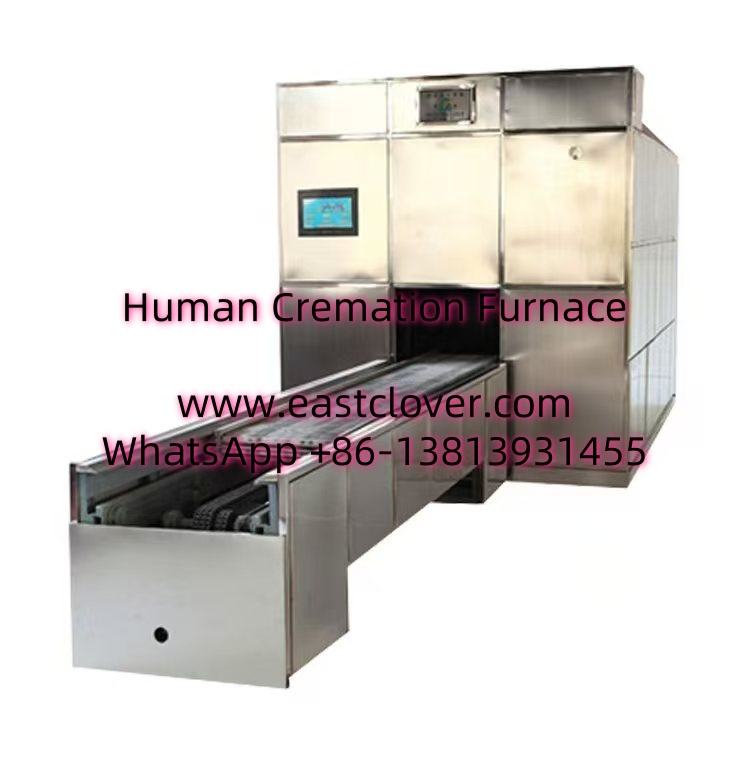Introduction
Traditional cremation, a centuries-old practice, has faced growing scrutiny due to its environmental impact. Conventional cremation furnaces, which rely on fossil fuels like natural gas or propane, emit significant amounts of carbon dioxide (CO2), particulate matter (PM), and toxic pollutants such as mercury from dental amalgams. With increasing global awareness of climate change and air quality concerns, the funeral industry is under pressure to adopt sustainable alternatives. Low-emission cremation technologies are emerging as a critical solution, offering a cleaner, more environmentally responsible approach to honoring the deceased while safeguarding the planet.
Advancing Low-Emission Cremation Furnace Technologies
1. Electric Cremation Furnaces
Electric cremation furnaces eliminate the need for fossil fuels by using renewable energy sources such as solar or wind power. These systems heat combustion chambers to high temperatures using electric resistors, significantly reducing CO2 emissions. For instance, a crematorium in Norway transitioned to electric furnaces powered by hydropower, cutting its carbon footprint by 40%. While initial installation costs are higher, long-term savings on fuel and maintenance make this a viable option for eco-conscious facilities.
2. Secondary Combustion Chambers
Secondary combustion chambers, or afterburners, enhance traditional cremation systems by incinerating pollutants before they exit the furnace. These chambers subject emissions to temperatures exceeding 1,800°F (982°C), breaking down volatile organic compounds (VOCs) and particulate matter. Studies show this technology can reduce VOC emissions by over 90%, making it a cost-effective retrofit for existing furnaces.
3. Advanced Filtration Systems
Modern filtration systems are critical for capturing mercury and other hazardous emissions. Activated carbon filters trap mercury vapor, while wet scrubbers neutralize acid gases like sulfur dioxide (SO2) and nitrogen oxides (NOx). The UK’s Mercury Abatement Strategy, which mandates these filters in crematoria, has successfully reduced national mercury emissions by 50% since 2005.
4. Alternative Fuel Sources
Biofuels and hydrogen are emerging as sustainable alternatives to natural gas. Biofuels derived from organic waste produce fewer particulates and CO2, with a Swedish pilot project achieving a 50% emissions reduction using biogas. Hydrogen, while still experimental, promises zero CO2 emissions when combusted, though infrastructure challenges remain.
5. Hybrid Cremation Systems
Hybrid systems combine electric and gas-fired technologies to balance efficiency and environmental impact. For example, some California crematoria use electric pre-heating followed by gas combustion, reducing fuel consumption by 30%. Such systems offer flexibility for regions transitioning to renewable energy.
6. AI and Real-Time Emissions Monitoring
Artificial intelligence (AI) and IoT sensors optimize combustion efficiency by adjusting temperature and airflow in real time. A German crematorium reported a 20% reduction in fuel use after integrating AI-driven monitoring, demonstrating the potential of smart technologies to minimize emissions.
www.southclover.com
The shift to low-emission cremation technologies is not just an environmental imperative but a moral one. Innovations like electric furnaces, secondary combustion, and AI optimization are redefining the industry, offering pathways to drastically reduce pollution and carbon footprints. As regulatory frameworks tighten and public demand for sustainability grows, adopting these technologies will become essential for crematoria worldwide. Investing in greener practices today ensures that honoring loved ones does not come at the expense of the planet’s future.
FAQs
- Why focus on reducing cremation emissions?
Cremation contributes to air pollution and climate change through CO2, mercury, and particulate matter. Low-emission technologies mitigate these impacts.
- What are the most effective low-emission technologies?
Electric furnaces, secondary combustion chambers, and advanced filtration systems are among the most impactful solutions.
- Are electric cremation furnaces expensive?
While upfront costs are higher, long-term savings on fuel and maintenance offset initial investments.
- How is mercury addressed in modern systems?
Activated carbon filters and scrubbers capture mercury vapor, aligning with policies like the UK’s Mercury Abatement Strategy.
- Can existing crematoria upgrade to these technologies?
Yes, retrofitting with secondary combustion chambers or filtration systems is feasible for many facilities.
- What role do biofuels play?
Biofuels reduce reliance on fossil fuels and lower CO2 emissions, though availability varies by region.
- Are these technologies widely adopted?
Adoption is growing in Europe and North America, driven by regulations and consumer demand, but global implementation remains uneven.

Comments are closed